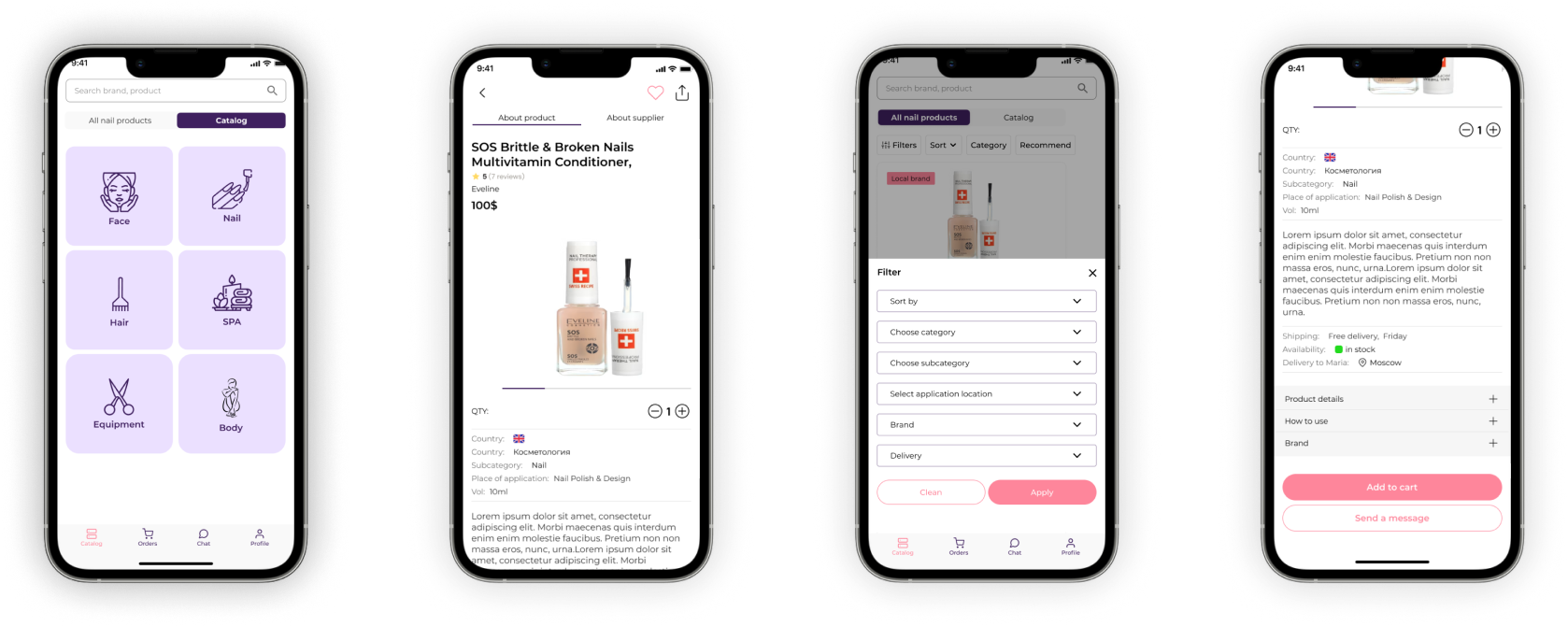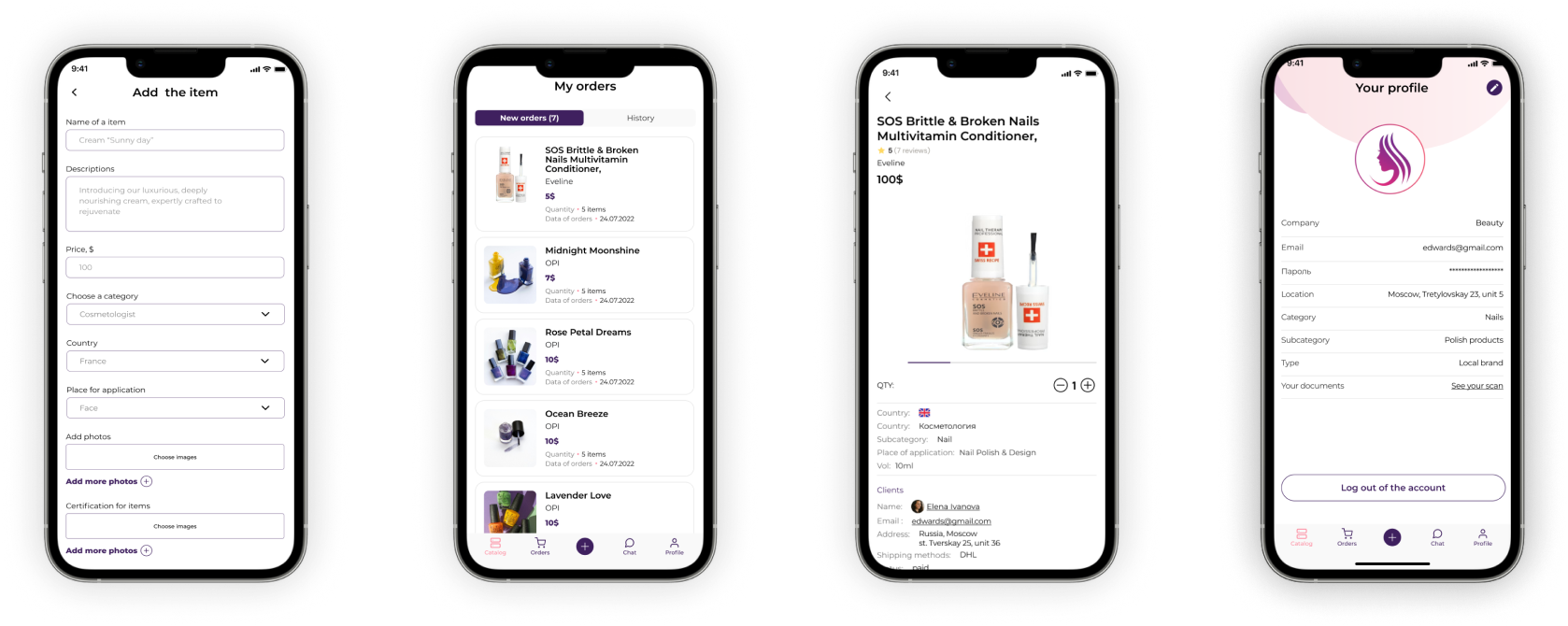The primary goal of UX/UI design is to enhance user satisfaction by making products more usable, accessible, and enjoyable
"Care of Beauty" is a mobile marketplace app that allows beauty professionals to find suppliers and professional cosmetics for their jobs. The app simplifies the search and ordering process, providing an opportunity for suppliers to display their products to industry experts. As the UX/UI designer for this project, I developed an MVP (Minimum Viable Product) concept for a beauty store marketplace to evaluate its viability
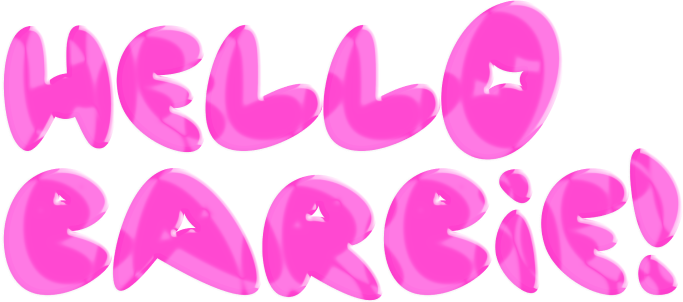
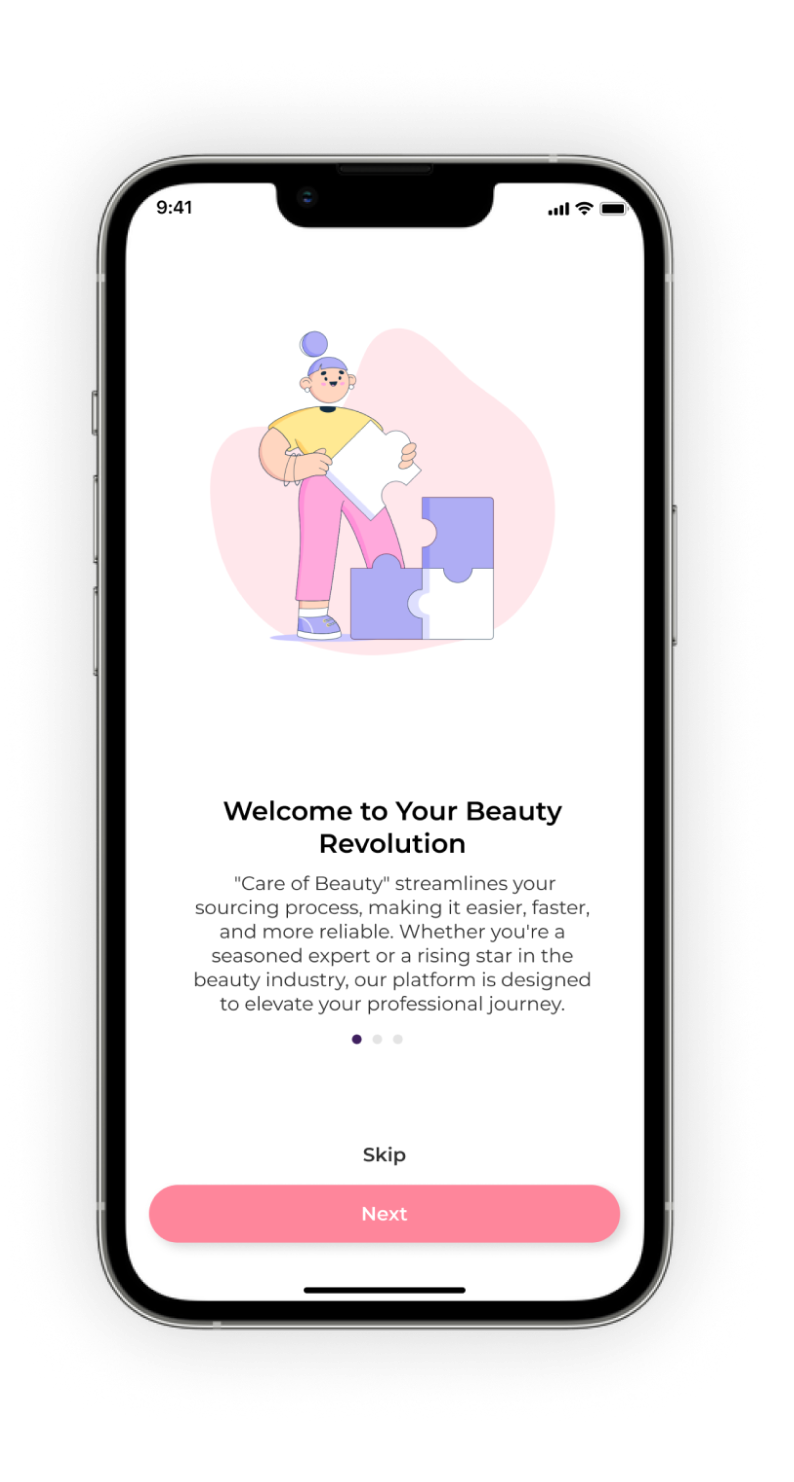
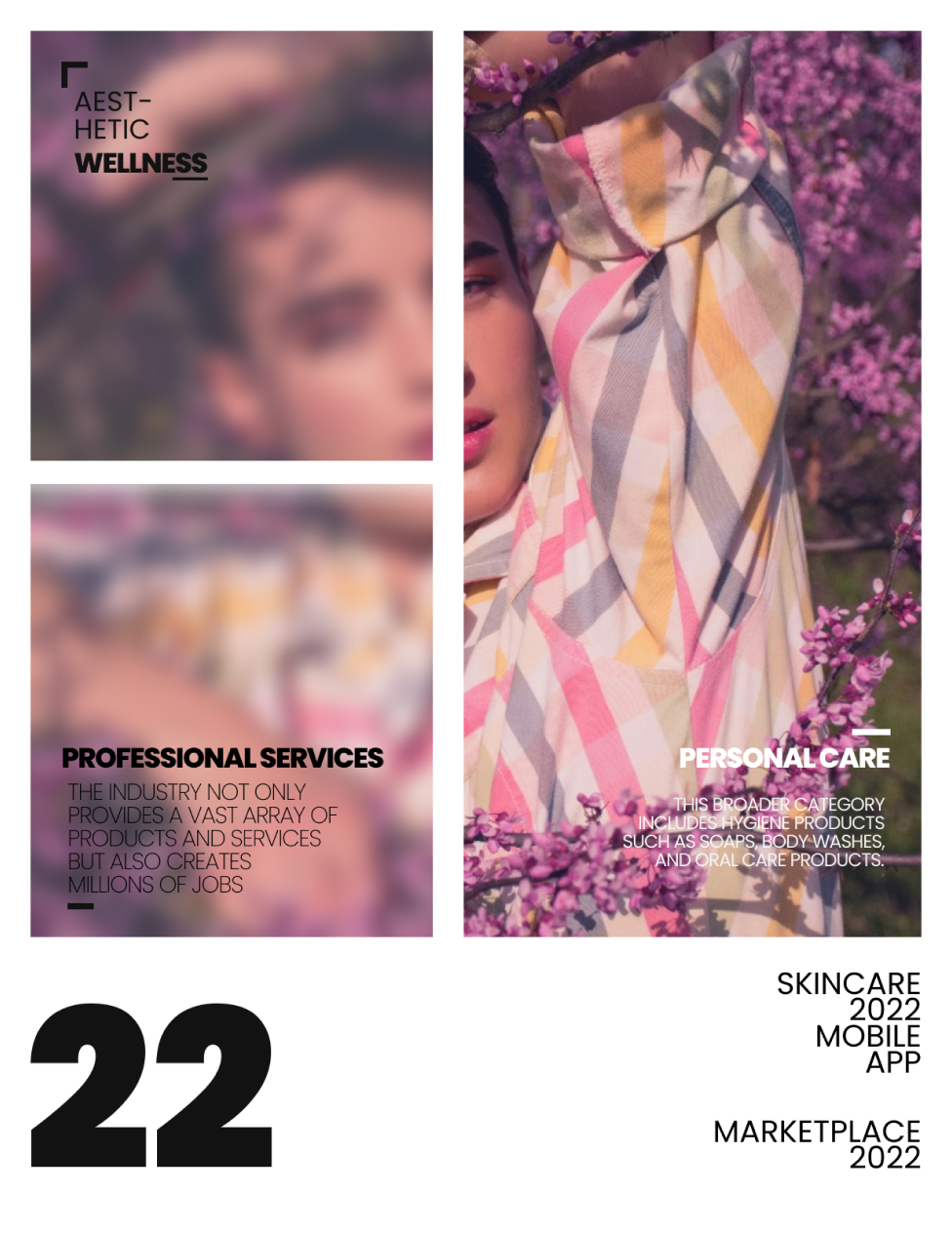
To gain knowledge about the market, competitors, and target audience, I conducted three types of user research, starting with competitive analysis, then moving on to user interviews and card sorting.
The analysis revealed no direct competitors, highlighting a clear market opportunity. However, two indirect competitors were identified:
We organized brief interviews with 5 beauty specialists and 5 local suppliers. This aimed to understand where and how beauty specialists make their purchases and the challenges suppliers face in the supply process.
Beauty Specialists:
Suppliers:


Our research included two card sorting sessions with beauty industry professionals using Optimal Workshop. The first, a hybrid sort, investigated user navigation and search behaviors in a catalog. The second, a closed sort, showed the key elements needed on product cards and product pages for decision-making.


Based on the insights gathered from interviews and card sorting, our brainstorming session generated several ideas, including:

The beauty specialists' user flow facilitates fast search and purchase. Post-registration, specialists have three search options:
The supplier user flow is crafted to simplify product management. Suppliers can:
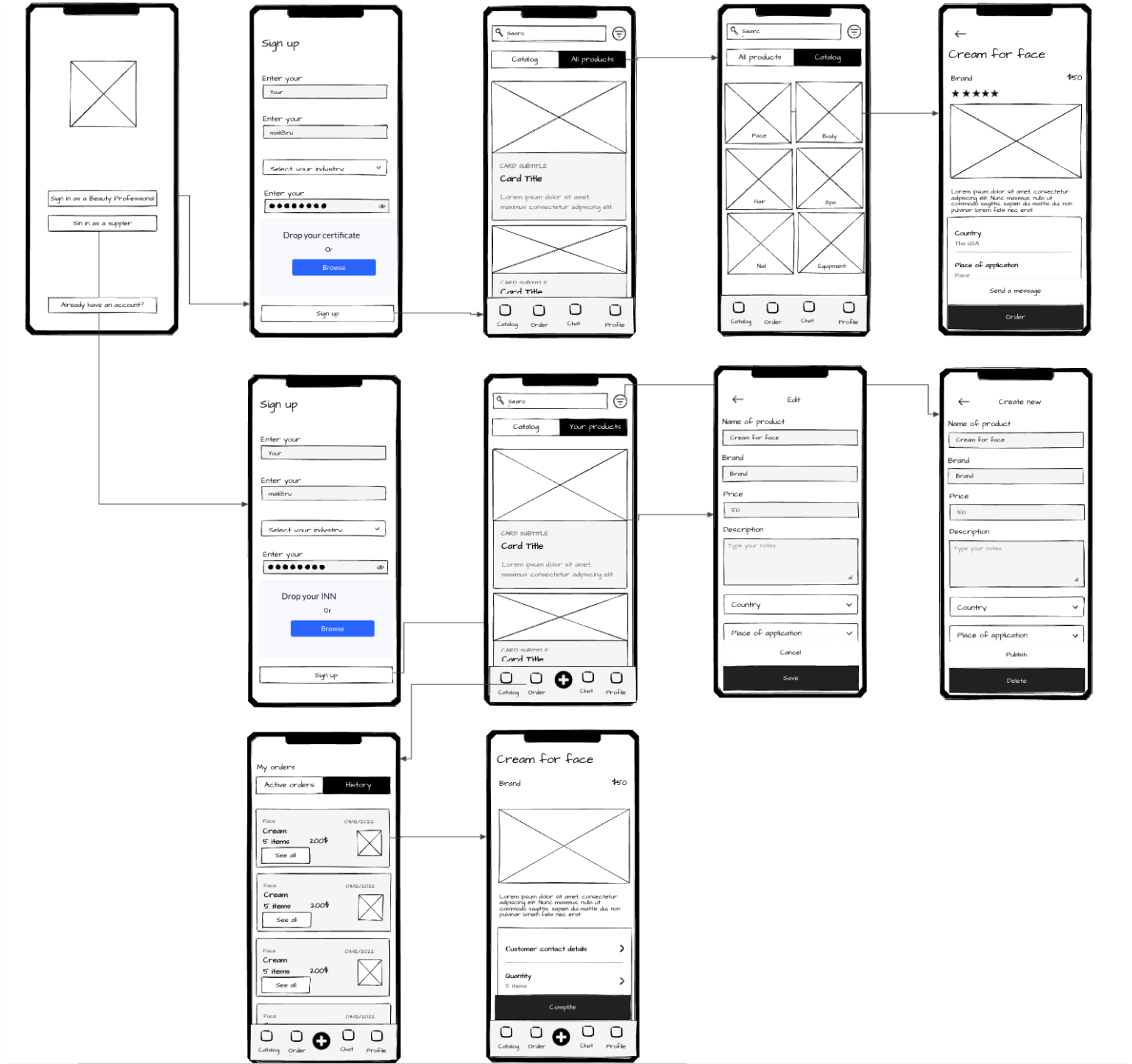
I created clickable prototypes based on main flows for Beauty Industry Specialists and Suppliers to test our design assumptions:


Limited by time and resources, we tested with 5 nail industry specialists and 4 hair product suppliers, asking every one of them to complete 2 tasks to evaluate our concepts and gather insights.
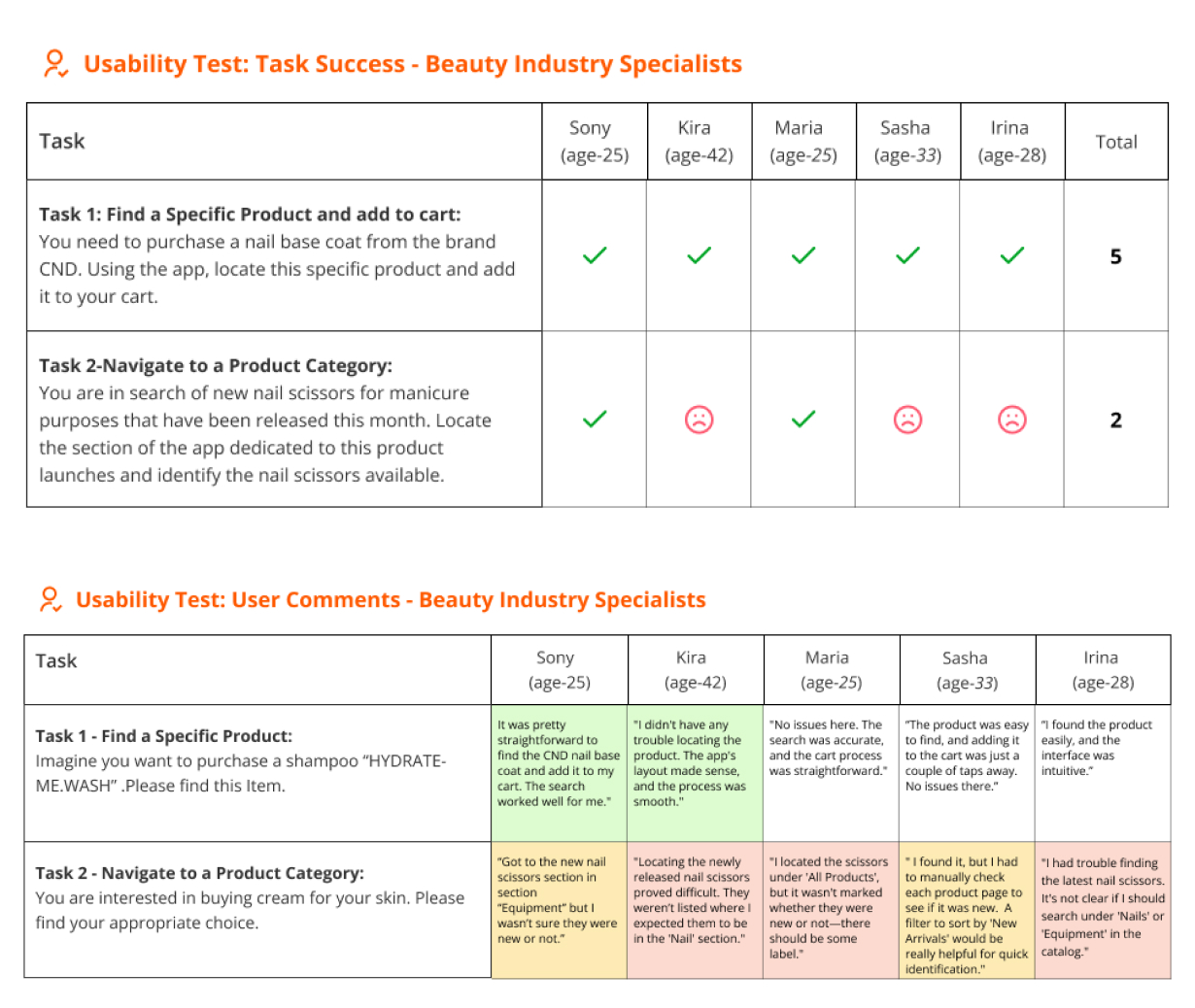




All set business goals were successfully met following the MVP launch, during which we also identified key areas for improvement:
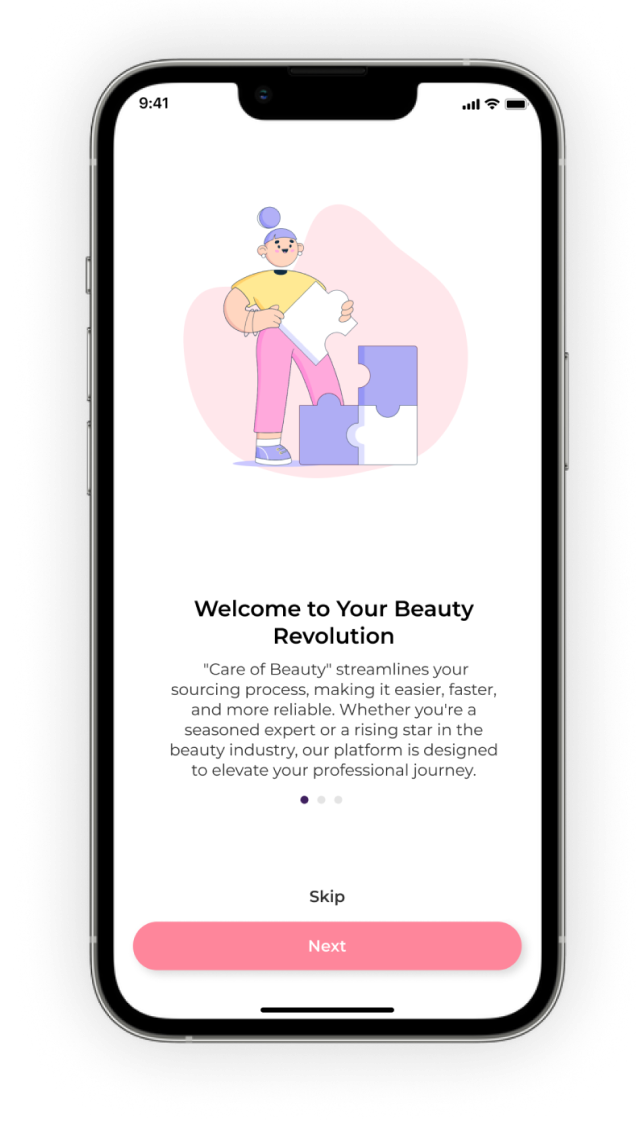
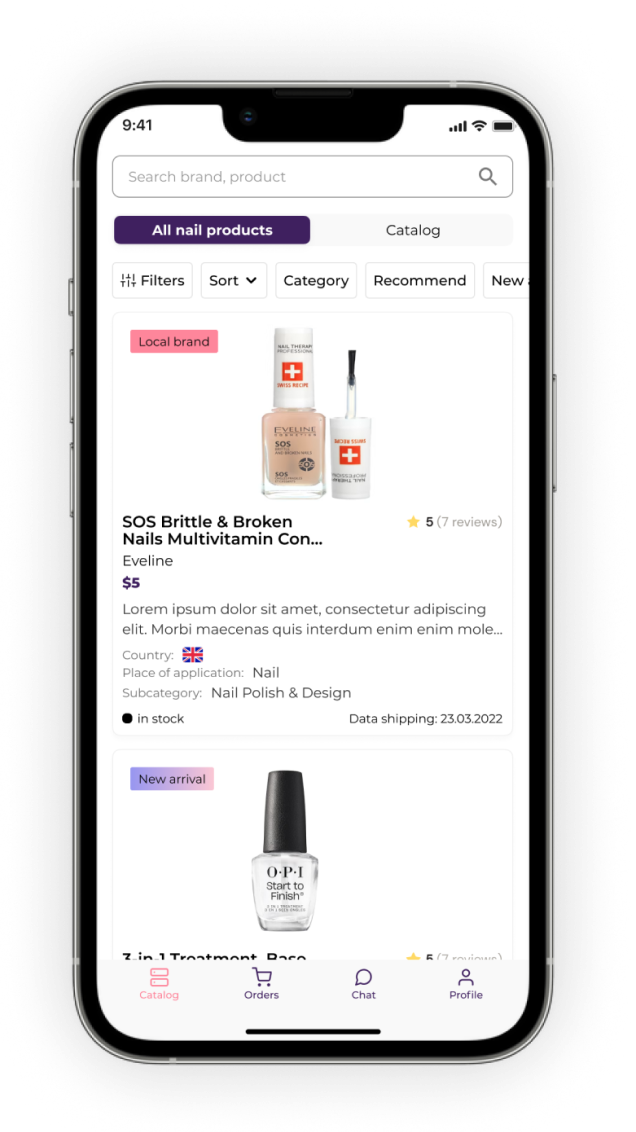
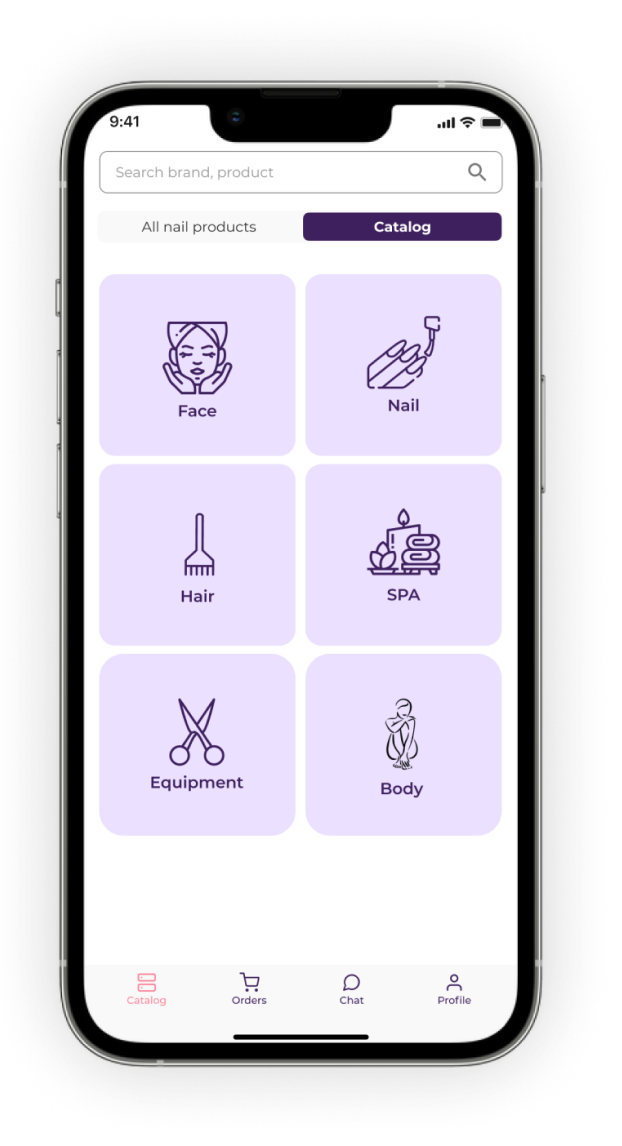
Reflecting on the project, one of our key learnings was the importance of pre-testing.
During a testing session, I identified several overlooked issues in our prepared user scenarios and tasks. Key features were missing, such as the ability to save products and a filter for searching new categories, which were supposed to be included in the tasks. These issues made task completion difficult for users and caused confusion.
After the initial user interview and recognizing these issues, I decided to refine our scenarios and tasks. To ensure no further problems would disrupt our testing process or compromise data accuracy, I conducted a pre-test with colleagues.
It helped us to refine our testing process, ensuring more thorough preparation and smoother execution with our target audience. This experience emphasized the importance of pre-testing with the team, and now, I always conduct selective testing with team members before sessions with users.
